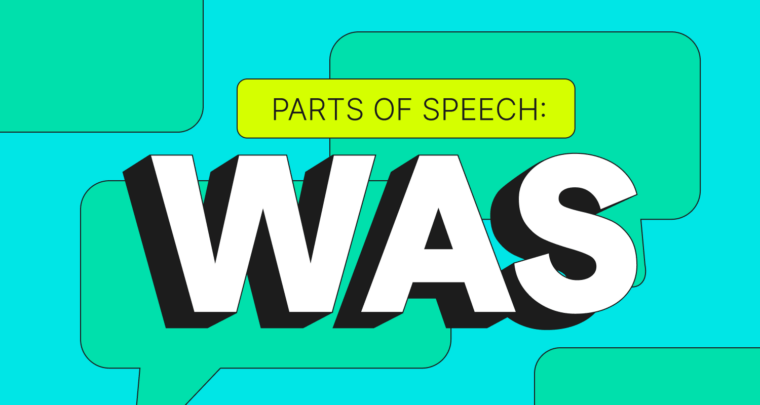
Knowing the right way to capitalize your title depends on which style guide you’re following. Major style guides—such as the AP Stylebook, The Chicago Manual of Style, and the AMA Manual of Style—have specific rules on title capitalization. (We reference two of the most common style guides, AP and Chicago, throughout this post.)
According to most style guides, nouns, pronouns, verbs, adjectives, and adverbs are capitalized in titles of books, articles, and songs. You’d also capitalize the first word and (according to most guides) the last word of a title, regardless of what part of speech they are.
A few parts of speech tend to be lowercase. For instance, articles (the, an, and a) are lowercase.
Some conjunctions (e.g., but, yet) and prepositions (e.g., over, through) are capitalized, and sometimes some are lowercased—it depends on the style guide you follow. For instance, in AP style title case, prepositions of four letters or more are capitalized. But in Chicago-style title case, all prepositions are lowercase, no matter their length. (We explain this more below.) When in doubt, look up the rules of the style guide you’re choosing to follow to know exactly how to style a title.
Our examples below can help orient you to capitalization rules across different style guides, so you can title your books, articles, essays, and more like a pro in no time.
Articles
Let’s start with articles. All major style guides are aligned on articles, which agree that articles are lowercase in titles unless they’re one of the first and last words:
Incorrect: Ernest Hemingway wrote For Whom The Bell Tolls.
Correct: Ernest Hemingway wrote For Whom the Bell Tolls.
Incorrect: Girl on A Train is a thriller by A. J. Waines.
Correct: Girl on a Train is a thriller by A. J. Waines.
In each of these titles, the and a are not capitalized because they are articles.
In this next example, the first article, a, is capitalized because it’s the first word, but the is lowercase because it is an article that is not a first or last word:
Incorrect: Jennifer Egan wrote A Visit from The Goon Squad.
Correct: Jennifer Egan wrote A Visit from the Goon Squad.
Conjunctions
Next are conjunctions. Conjunctions are words that link other words, phrases, or clauses together. Style guides differ here on whether to capitalize or lowercase certain conjunctions. For instance, according to AP style, conjunctions of three letters or fewer are lowercase. However, Chicago style prefers to lowercase all coordinating conjunctions except for yet and so and lowercases the subordinating conjunction as but capitalizes if. (Again, it’s best to look up the rule if you’re unsure about your specific title.)
The examples below illustrate both AP and Chicago rules for conjunctions:
Incorrect: She titled her thesis “Urban Legends: Fact Or Fiction?”
Correct: She titled her thesis “Urban Legends: Fact or Fiction?”
Incorrect: Shakespeare wrote Romeo And Juliet.
Correct: Shakespeare wrote Romeo and Juliet.
Nouns
Style guides agree that nouns should always be capitalized.
Incorrect: The lion, the witch and the wardrobe is by C. S. Lewis.
Correct: The Lion, the Witch and the Wardrobe is by C. S. Lewis.
Verbs
Verbs are also always capitalized, according to all style guides.
Incorrect: Things fall Apart is by Chinua Achebe.
Correct: Things Fall Apart is by Chinua Achebe.
Adjectives
Adjectives are always capitalized.
Incorrect: Roald Dahl wrote Charlie and the chocolate Factory.
Correct: Roald Dahl wrote Charlie and the Chocolate Factory.
Adverbs
Adverbs are also always capitalized.
Incorrect: Brené Brown wrote Daring greatly: How the Courage to Be Vulnerable Transforms the Way We Live, Love, Parent, and Lead.
Correct: Brené Brown wrote Daring Greatly: How the Courage to Be Vulnerable Transforms the Way We Live, Love, Parent, and Lead.
Prepositions
Knowing whether to capitalize prepositions also depends on what style guide you follow. In AP title case, prepositions of four or more letters (such as between, above, and below) should be capitalized. However, the Chicago Manual of Style says to lowercase all prepositions, regardless of their length. When following Chicago Style, watch out for how you’re using a preposition in a title—it might not necessarily function as a preposition. You can capitalize a preposition when it is “used adverbially or adjectivally (up in Look Up, down in Turn Down),” the Chicago Manual of Style says.
So if you were writing the following title of this novella, you would write it this way, according to Chicago style:
Norman Maclean wrote A River Runs through It.
But if you were following AP style, you would write it this way:
Norman Maclean wrote A River Runs Through It.
More examples of capitalization in titles
Consider these additional examples of correctly capitalized titles (which meet the criteria in any style guide) to help guide you:
East of Eden was a popular book by John Steinbeck.
The Ocean at the End of the Lane, by Neil Gaiman, is my favorite book.
The first movie of the series is Harry Potter and the Philosopher’s Stone.
The sitcom Two and a Half Men explores the lives of two brothers.
The same rule regarding title capitalization applies to subtitles. See the examples below:
The Assassin’s Cloak: An Anthology of the World’s Greatest Diarists
Virginia Woolf wrote Orlando: A Biography.
In these particular examples, the articles “an” and “a” are capitalized because they are both the first word of the subtitle.






